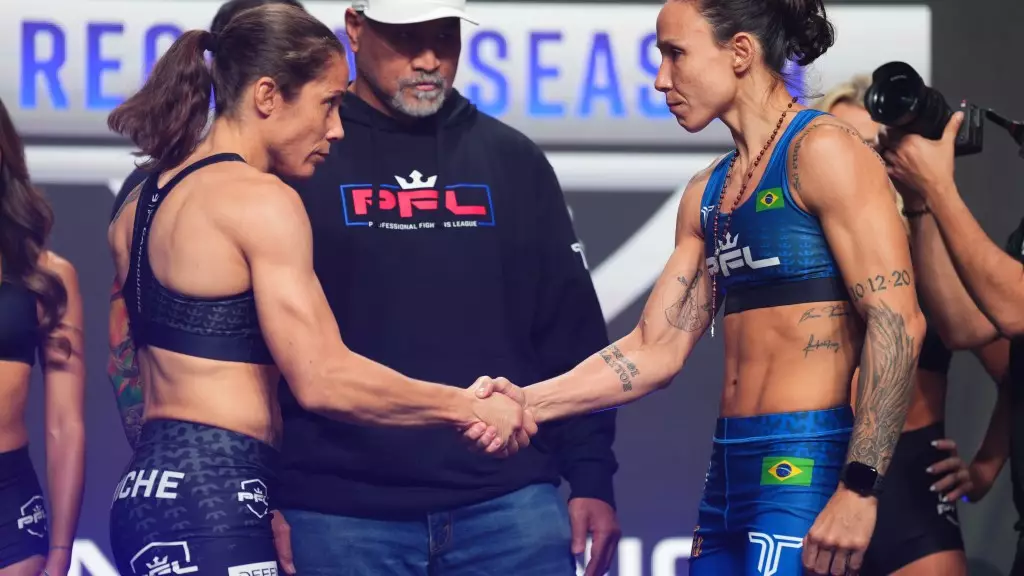The Professional Fighters League (PFL) has recently introduced a shift in its competitive structure by unveiling its latest tournament fields for the women’s flyweight and bantamweight divisions. This move signifies a departure from the traditional point-based season format that had characterized the league in previous years. The organization is now leaning into a tournament-style model, a structure that promises to offer a fresh and thrilling dynamic for both fighters and fans alike. The anticipation is palpable as these initial bouts will take place at the iconic Universal Studios Florida, setting a vibrant stage for this competitive reimagining.
The women’s flyweight division boasts a fascinating lineup that will surely capture the attention of MMA enthusiasts. With fighters like Liz Carmouche and Juliana Velasquez headlining the field, viewers can expect high stakes and personal rivalries that elevate the drama of the competition. Their tumultuous Bellator trilogy, where Carmouche handed Velasquez three significant defeats—including two in championship clashes—adds an enticing layer of history that will enhance the narratives surrounding their upcoming matches. The additional presence of other formidable fighters such as Kana Watanabe, Taila Santos, and rising prospects reflects a competitive landscape where experience intersects with the burgeoning talent eager to make their mark.
Moreover, the inclusion of alternates like Ekaterina Shakalova and Saray Orozco provides depth to the tournament, ensuring that the competition remains robust and unpredictable. The strategic implications of having alternates—who could step in at any moment—further intensify the stakes for the primary participants, making every match critical.
In the bantamweight division, the dynamics change as recent Bellator title contender Magomed Magomedov steps into the spotlight. Along with notable fighters such as Leandro Higo, the tournament will feature unbeaten prospects Sarvarjon Khamidov and Ciaran Clarke, adding an exhilarating element of uncertainty. One of the most compelling aspects of this tournament lies in the cross-generational clash of seasoned competitors and up-and-coming athletes hungry for recognition. With fighters like Ali Taleb and Kasum Kasumov also vying for a slice of the prize, the bantamweight division is poised to be a battleground showcasing the future of mixed martial arts.
It’s worth noting that while the PFL once lured its champions with a tantalizing $1 million grand prize, the new structure reallocates this incentive to a $500,000 bonus for each tournament victor. This pivot not only reflects a change in financial strategy but also positions individual tournaments as definitive proving grounds for fighters.
As PFL embarks on this new chapter, the excitement is tempered with the uncertainty typical of any major transition. This tournament format represents an opportunity for fighters to engage in high-stakes matchups that can define their careers. With an emphasis on direct competition over cumulative points, the league is likely to usher in richer storylines and more dramatic finishes. Fans, fighters, and analysts alike will be closely watching how these tournaments unfold, as each match has substantial implications not only for individual standings but for the broader landscape of professional mixed martial arts. The stakes are high, the competitors are ready, and the PFL’s transformation promises to redefine the way we view tournaments in MMA.

